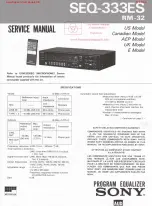
Chapter 1:Overview
10
Equalizer Installation and Administration Guide
Real-time Monitoring
Equalizer’s intuitive, browser-based administration interface gives you a powerful tool for
configuring and monitoring your servers.
Equalizer Network Configurations
Equalizer's role in a network is typically that of a gateway between two networks. An
Equalizer has two network interfaces designated external and internal.
Figure 6 Equalizer’s gateway role
The external interface is connected to the network to which the client machines and
possibly the Internet or an Intranet are connected. This external network receives the client
request packets that Equalizer distributes across the available servers. Equalizer also uses
the external network to transmit response packets to clients.
The internal interface is connected to the internal network, the network to which the server
machines that process the incoming requests are connected. These physical servers
provide services on specific IP addresses and ports. Equalizer's NAT subsystem translates
client request packets and then forwards them to the selected server. When a server
machine sends a response packet back to a client, it is processed by Equalizer and then
forwarded to the appropriate client across the external network.
To ensure that Equalizer can process outbound packets, the servers’ routing tables must be
configured so that Equalizer is the gateway for any packets that leave the internal network.
If the servers don’t use Equalizer’s internal address as the gateway when sending
responses to clients, the reply packets will not be translated on their way to the client,
causing the reply packets to be rejected by the clients because they don’t belong to an
established connection. (From the client side, it would look like the server was not
responding.)
Hosts or routers on the external network can have routes to the internal network that are
gatewayed through Equalizer's external address. Equalizer’s external address is also its
administration address—the IP address used to connect to Equalizer’s browser-based
administration interface.
Internet
Client
Client
External Network
Server
Server
Server
Internal Network
Equalizer
Summary of Contents for Equalizer
Page 2: ......
Page 4: ...iv Coyote Point Systems Inc ...
Page 32: ...Chapter 2 Installing Equalizer 22 Equalizer Installation and Administration Guide ...
Page 42: ...Chapter 3 Configuring Equalizer 32 Equalizer Installation and Administration Guide ...
Page 108: ...Chapter 7 Troubleshooting 98 Equalizer Installation and Administration Guide ...
Page 114: ...Appendix B Using Reserved IP Addresses 104 Equalizer Installation and Administration Guide ...
Page 118: ...Appendix C Regular Expression Format 108 Equalizer Installation and Administration Guide ...
Page 130: ...Appendix E Technical Specifications 120 Equalizer Installation and Administration Guide ...
Page 136: ...Appendix F License and Warranty 126 Equalizer Installation and Administration Guide ...
















































